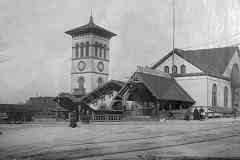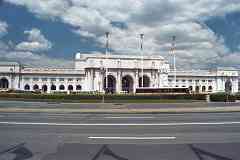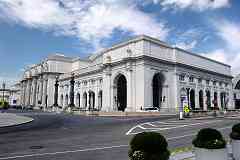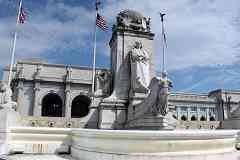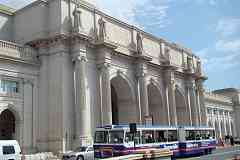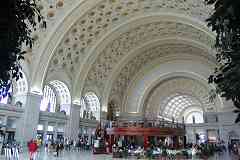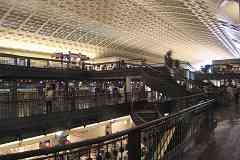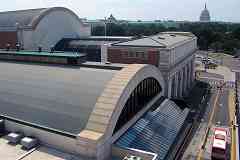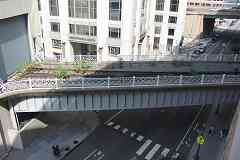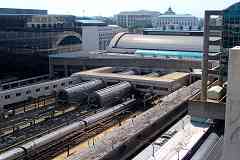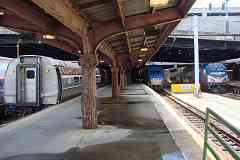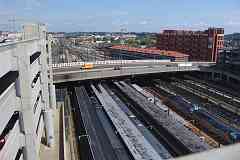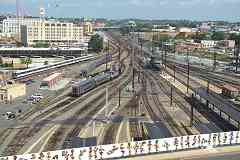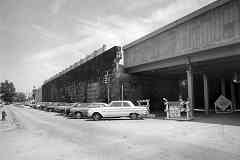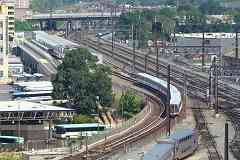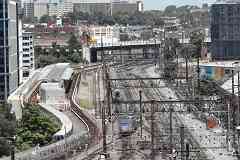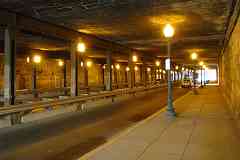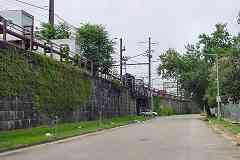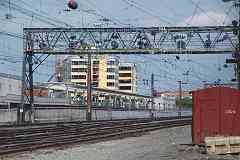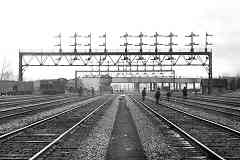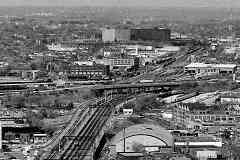|
Sculptures designed by Louis St. Gaudens stand guard above the entrance to Union Station. Cut by
Andrew E. Bernasconi, the 18-feet tall allegorical figures represent Archimedes - Mechanics,
Ceres - Agriculture, Apollo - Imagination or Inspiration, Themis - Freedom or Justice,
Thales - Electricity, and Prometheus - Fire.
Accompanying aspirational inscriptions by Harvard president Charles William Eliot read
with some grandiosity:
- FIRE - GREATEST OF DISCOVERIES, ENABLING MAN TO LIVE IN VARIOUS CLIMATES, USE MANY FOODS AND COMPEL THE FORCES OF NATURE TO DO HIS WORK.
- ELECTRICITY - CARRIER OF LIGHT AND POWER, DEVOURER OF TIME AND SPACE, BEARER OF HUMAN SPEECH OVER LAND AND SEA, GREATEST SERVANT OF MAN ITSELF UNKNOWN.
- THOU HAS PUT ALL THINGS UNDER HIS FEET. SWEETENER OF HUT AND OF HALL, BRINGER OF LIFE OUT OF NAUGHT, FREEDOM O FAIREST OF ALL, THE DAUGHTERS OF TIME AND THOUGHT.
- MAN'S IMAGINATION HAS CONCEIVED ALL NUMBERS AND LETTERS - ALL TOOLS VESSELS AND SHELTERS - EVERY ART AND TRADE ALL PHILOSOPHY AND POETRY - AND ALL POLITIES. THE TRUTH SHALL MAKE YOU FREE.
- THE FARM - BEST HOME OF THE FAMILY - MAIN SOURCE OF NATIONAL WEALTH - FOUNDATION OF CIVILIZED SOCIETY - THE NATURAL PROVIDENCE.
- THE OLD MECHANIC ARTS CONTROLLING NEW FORCES BUILD NEW HIGHWAYS FOR GOODS AND MEN OVERRIDE THE OCEAN AND MAKE THE VERY ETHER CARRY HUMAN THOUGHT.
- THE DESERT SHALL REJOICE AND BLOSSOM AS THE ROSE.
Link:
installing Thales statue 1912
|
